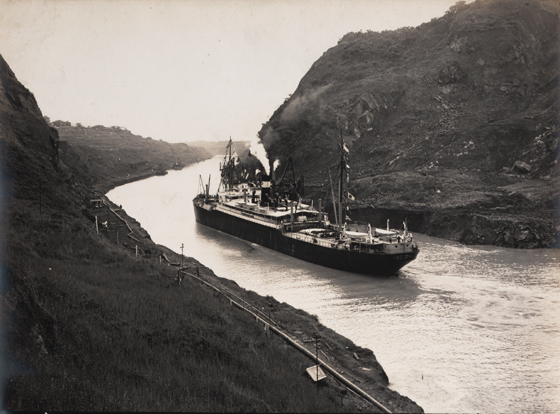In a year busy with centennials — World War I and Union Station — make room for the Panama Canal. It also has been 100 years since the Atlantic and Pacific oceans were joined by one of the wonders of the modern world.
That may seem to have little to do with Kansas City, but the Linda Hall Library has the “lost” papers of the office engineer for the Culebra Cut, the key section of the canal project that cut through the continental divide.
The papers of A.B. Nichols, inaccessible for more than 80 years, are now part of a series of remembrances that will begin with an exhibit opening tonight at the library and culminate in October with a visit by historian David McCullough, author of a book about the canal.
Even McCullough did not have access to the Nichols material, which includes about 1,200 photographs, 1,300 blueprints, 100 maps and more than 100 journals. Before they came to the Linda Hall Library, they were decaying on shelves in New York.
“They were technically lost,” said Lisa Browar, the library’s president. “Because if something isn’t cataloged, the general public or the research public can’t find it. And you can’t use what you can’t find.”
To make the centennial observance more fun, a functioning scale model of a Panama Canal lock is being built on the north lawn of the library, 5109 Cherry St., with water and model ships. It is a partnership with the University of Missouri-Kansas City’s School of Computing and Engineering.
The Panama Canal is a man-made connection, excruciatingly excavated between the oceans, that greatly cut travel time and shipping costs. It was a huge accomplishment and, along with the First World War, it signaled the beginning of the “American century.”
The centennial exhibit includes more than 100 items. Co-curators Eric Ward and Donna Swischer said Nichols’ records were meticulous, down to the amounts of dynamite used and the numbers of cubic tons of earth moved.
“He has books that look like Excel spreadsheets for daily excavations, the costs of every part of the operation in tiny little pencil marks, and cross-references to different books,” Swischer said.
Nichols, of Philadelphia, was first hired by the Isthmian Canal Commission in 1899 to survey a Nicaraguan route. In 1904, he was assigned to the Panama Canal. In 1906, he was appointed office engineer there and retired in 1914.
“This is first-person history,” Browar said. “The artifacts in the Nichols collection represent what one man who was eyewitness to the entire project felt was important to save.”
One journal records Nichols’ thoughts about an explosion of 44,000 pounds of dynamite on Dec. 12, 1908, that killed 26 people and wounded 49. Speculation about the cause included a chemical reaction with acidic water, but Nichols had his own theory.
“It is practically certain that the powder man in charge of loading the holes was drunk the night before the explosion and he was also seen in a saloon in Bas Obispo drinking about 9 a.m. the day of the explosion,” Nichols wrote. “This is probably the sort of chemical action which caused the explosion.”
Nichols’ papers had been warehoused at the Engineering Societies Library in New York. When it closed in 1995, most of the library’s material was moved to the Linda Hall Library, the largest privately funded library devoted to science, engineering and technology.
The library has digitized the Nichols collection for its website, and on Aug. 15, the 100th anniversary of the opening of the canal, will post a digital version of the centennial exhibit.
The canal is undergoing an expansion project.
Alberto Aleman Zubieta, chief executive officer of the Panama Canal Authority from 1996 to 2012, will speak about the project at 7 tonight at the library.
McCullough will speak about the creation of the canal at 7 p.m. Oct. 2 at Unity Temple on the Plaza.
